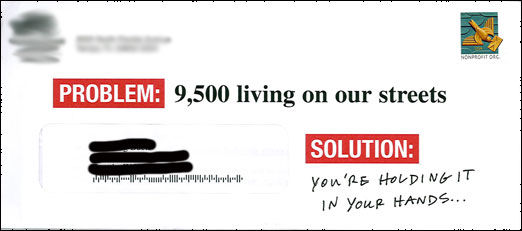At the beginning of last year, Steven wrote one of his most popular blogs. It came after he’d just finished writing his 25th year-end campaign. The thoughts he jotted down are timeless, and not surprisingly, are super-helpful right now.
In his post, Steven lists off 6 things that he’s discovered on his fundraising journey. I particularly like the last one.
So, in this crazy time, I hope you can take a moment and learn from this old fundraiser. He’s still young at heart, though.
– Jonathan
I just completed my 25th year-end fundraising campaign.
It made me think about the lessons I’ve learned over the years communicating to donors en masse. Not the ‘one major donor who likes this’ or ‘the foundation that likes that,’ but when nonprofits are communicating to everyone on their file.
So in hopes that this is helpful, here are a handful of big-picture things that this Fundraiser has come to realize are enduring truths…
It’s harder than ever to get and keep attention
Get great at getting your donor’s attention. And keeping it. This means more drama and less process. More National Enquirer and less National Geographic. This means louder, bolder, redder, and not that fricking shade of light blue that no older donor can see or read.
Mostly it means not assuming that your donor is going to read anything you send them, let alone the whole thing.
You have to earn their attention, my friend.
The way your organization does its work is rarely important
And I mean rarely.
Most organizations, most of the time, should be talking about the outcomes their work creates. They should not be talking about how the organization creates those outcomes.
So if you find yourself talking about your process, the names of your programs, the features of your programs … rethink what you’re talking to donors about.
The best-performing fundraising is usually about something the donor cares about, at the level at which they understand it, and about what their gift will do about it.
This is a hard truth. It saddens me to say that most small nonprofits never embrace this, and they stay small because of it.
Most small nonprofits have ‘untapped giving’ of 15% to 25% of their total revenue
This is based on applying best practices to a LOT of smaller nonprofits. They simply have a lot of donors who would like to give more money if they are Asked well and then cultivated correctly.
It’s a thrill to get to work with those organizations because the increase is real and immediate.
Most of the barriers to raising more money are self-imposed
The things that are holding back small- to medium-sized nonprofits are almost always fear-based barriers:
- “We can’t talk to our donors more, we’ll wear them out”
- “We have to share everything that we do, and that we are good at it”
- “We can’t be so forward, we need to engage our donors/potential donors more before…”
If you’re willing to do things differently, an experienced fundraiser can help you start raising more money immediately.
Successful fundraising is a knowledge issue, not a talent issue
One of the biggest joys of my life is watching fundraisers become Fundraisers. And it almost always happens when they internalize an idea – like the ones I mention above – rather than learning a new tactic.
Donor generosity is amazing
Donors continue to surprise me, even after 25 years. Their generosity is astounding. They want to make the world a better place. They are looking for opportunities to do so.
And we get to tap into that. For a living.
Fundraisers have the best job in the world.






